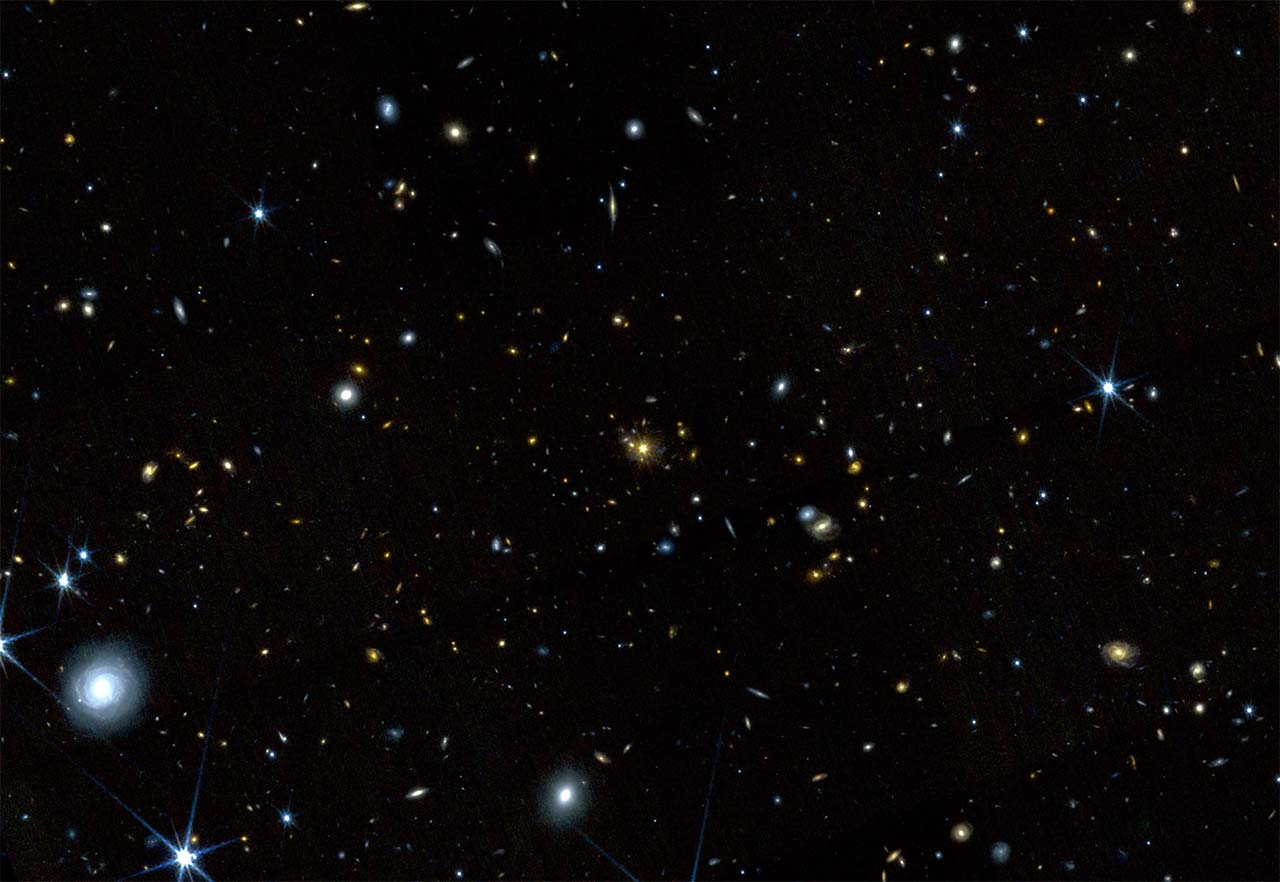Strands from Cosmic Spiderweb Connect to Subaru Telescope
| Topics

An international research team has used the James Webb Space Telescope (JWST) to observe massive galaxies discovered by the Subaru Telescope in a corner of the early Universe known as the Spiderweb protocluster. The JWST results confirm what had been suggested from the Subaru Telescope observations, namely that supermassive black hole activity can truncate the growth of galaxies.
The growth and evolution of galaxies is a major theme in modern astronomy. The origin of giant elliptical galaxies is one riddle. These galaxies consist entirely of old stars, so something early in their evolution must have shut off star formation in the progenitors of giant elliptical galaxies. According to one theory, the supermassive black holes at the hearts of the galaxies may play a role in determining the star formation.
An international research team has used the Subaru Telescope to observe still-forming protoclusters of galaxies that existed 10 billion years ago. The team has found that in these regions, some galaxies are still actively forming stars while others have stopped forming stars and have started to evolve into giant elliptical galaxies. The Subaru Telescope results also show that nearly half of the galaxies in these regions host a supermassive black hole actively gobbling up matter. But the data lacked the resolution to determine the relationship between star formation and black hole activity.
Now the team has used the JWST to obtain high-resolution maps of massive galaxies discovered by the Subaru Telescope in one of the protoclusters known as the Spiderweb protocluster. The results show that in the Spiderweb, galaxies with active supermassive black holes have stopped forming new stars, while conversely galaxies without active supermassive black holes are still forming new stars. These results support the theory that black hole activity determines the star formation.
“The Spiderweb protocluster has been studied by our team for more than 10 years using the Subaru Telescope and other facilities. With the new JWST data, we are now able to ‘answer the questions’ of understanding and predicting galaxy formation that we have accumulated,” remarks Rhythm Shimakawa, lead author of the paper presenting these results.
This article is including a link to a article for kids.
Hangry Big Black Holes
 Space Scoop | UNAWE
Space Scoop | UNAWE
The Universe Awareness website provides children through the world with fun, easy to understand news and educational materials about the Universe. These help kids understand the size and beauty of the Universe. The “Space Scoop” section of Universe Awareness contains articles written for kids explaining current astronomy news. A Space Scoop is available for this article.